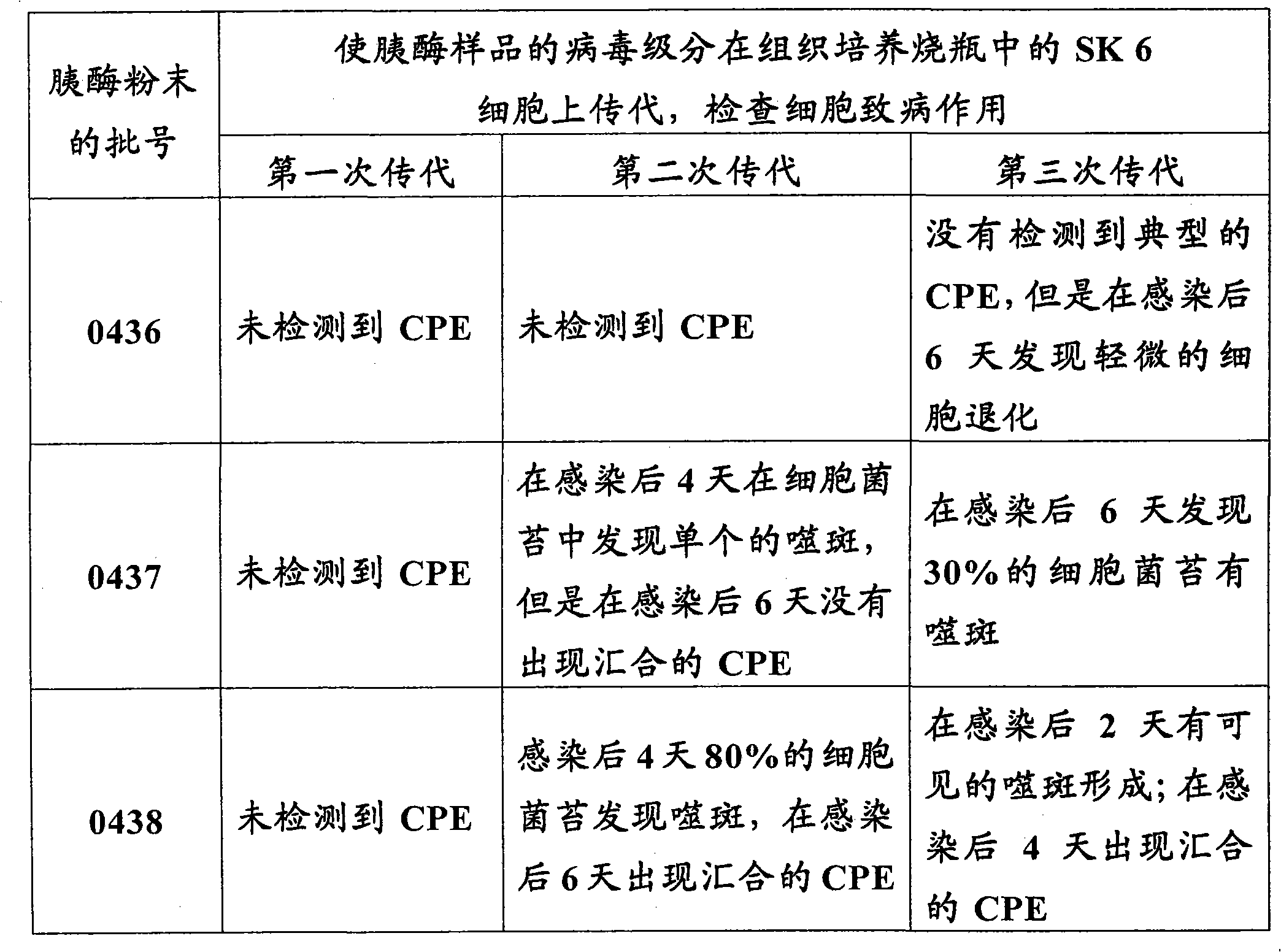Novel process for separating and determining the viral load in a pancreatin sample
A viral load and trypsin technology, applied in biochemical equipment and methods, trypsin, microbial determination/testing, etc., can solve the problem that no reliable method for detecting or isolating viral pollutants has been developed, and it is impossible to measure trypsin, etc. question
- Summary
- Abstract
- Description
- Claims
- Application Information
AI Technical Summary
Problems solved by technology
Method used
Image
Examples
Embodiment 1
[0077] Example 1: Study of deleterious effects of trypsin on different cell lines
[0078] In order to detect viruses in test samples of material using cell culture, the deleterious effect on the cells of the trypsin sample under study should be determined so that false negative results can be ruled out when evaluating CPE. Therefore, studies were performed on different cell lines to determine the deleterious effects of trypsin test sample suspensions, as described below.
[0079] A 0.5 ml portion of the PAN suspension prepared above was taken for testing for deleterious effects and was named "pancreatin suspension test sample".
[0080] Low-speed centrifugation: Spin the remaining PAN suspension in a conventional refrigerated centrifuge ( 22R Heraeus , with fixed angle rotor no. 3745) at 10,000 rpm (10,800 xg) and 4°C for 15 minutes. The supernatant after slow centrifugation was then centrifuged at 10,000 rpm and 4°C for an additional 15 minutes and named "supernatant a...
Embodiment 2
[0086] Embodiment 2: the test of different trypsin addition amounts to viral load
[0087] The two-step ultracentrifugation method of the present invention as described above was applied to isolate virus from different suspensions loaded with trypsin powder. Isolation of virus from trypsin is a prerequisite for detection of low viral loads by titration on susceptible cell lines:
[0088] - Mix 8 g of drug substance with 8 ml of antibiotic solution (1.0 g streptomycin sulfate and 1.2 g penicillin G per 20 ml of sterile PBS) and 64 ml of PBS and stir for 60 minutes in an ice-water bath
[0089] - Centrifuge the resulting suspension at 4°C and 10,800xg for 15 minutes
[0090] - Centrifuge the supernatant after the first centrifugation again at 4°C and 10,800xg for 15 minutes
[0091] The obtained supernatant after low speed centrifugation was used for the first ultracentrifugation. The first ultracentrifugation was performed using a discontinuous sucrose gradient (four centr...
PUM
| Property | Measurement | Unit |
|---|---|---|
| radius | aaaaa | aaaaa |
| height | aaaaa | aaaaa |
Abstract
Description
Claims
Application Information
 Login to View More
Login to View More - R&D
- Intellectual Property
- Life Sciences
- Materials
- Tech Scout
- Unparalleled Data Quality
- Higher Quality Content
- 60% Fewer Hallucinations
Browse by: Latest US Patents, China's latest patents, Technical Efficacy Thesaurus, Application Domain, Technology Topic, Popular Technical Reports.
© 2025 PatSnap. All rights reserved.Legal|Privacy policy|Modern Slavery Act Transparency Statement|Sitemap|About US| Contact US: help@patsnap.com

